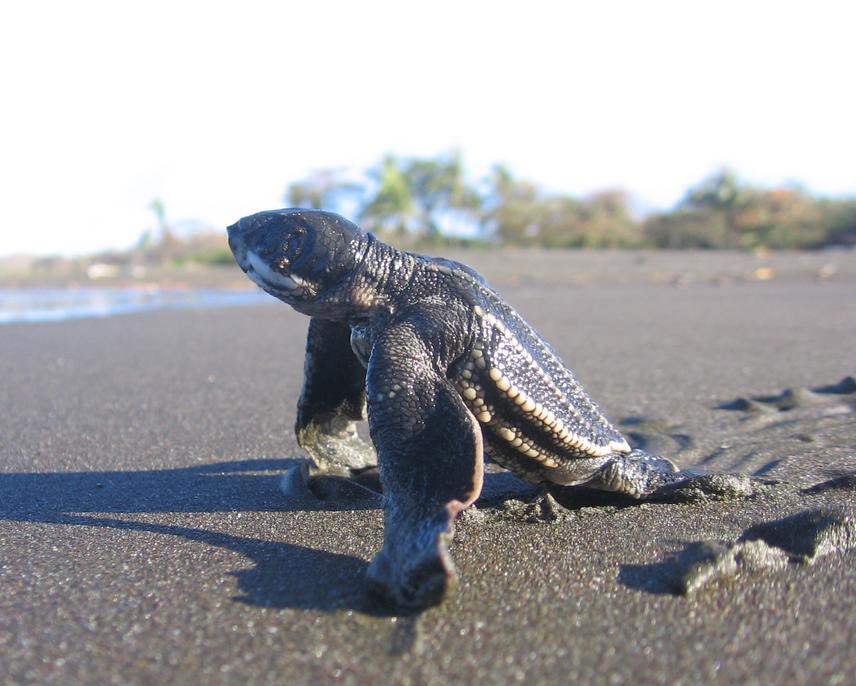Marta Pesquero Henche
To improve the knowledge of the biology and ecology of the leatherback (Dermochelys coriacea) and Pacific green (Chelonia mydas agassizii) sea turtles and implement guidelines for better conservation actions.

Leatherback hatching.
Ostional beach it´s an important nesting beach for three of the world’s seven species of sea turtles, and has been active in sea turtle conservation for the past 40 years.
Our research is focused on the leatherback and Pacific green turtle populations, which historically have received less attention than the olive ridley turtles that nest at this beach. Until 2004 no comprehensive research on these two species at Ostional had ever been carried out and, despite high rates of poaching being reported, no specific measures had been implemented to protect these species. After two years of research we found that Ostional was the second most important nesting ground in Costa Ricas Pacific coast for Eastern Pacific leatherbacks and very important for green sea turtle. Since 2004 we have been working each season to protect nesting females and their eggs and gather more information during the nesting season that goes from November until March.
According to the World Conservation Union (UICN) Red List, Eastern Pacific leatherback turtles are critically in danger of extinction and green sea turtles are currently in danger of extinction. Based on analysis of abundance, East Pacific Leatherback subpopulation has declined 97.4% during the past three generations. Latest studies reveal that this subpopulation will be nearly extinct- decline of 99.9% -by 2040. Years of poaching, excessive mortality rate of adults and juveniles caused by accidental capture in fishing activities, pollution, climate change and coastal development can be considered the main causes for this decline.
Both species are protected by the Appendix I of the Convention on International Trade in Endangered Species of Wild Fauna and Flora (CITES), by the Appendixes I and II of the Convention on Migratory Species (CMS) and by the Second Conference of the Parties (COP2/2004) to the Interamerican Convention for the Conservation and Protection of Sea Turtles, where a resolution was passed on the priority of efforts for the conservation of the leatherback sea turtles, with the intention of reverting the current status, namely the severely depleted population of species in the eastern Pacific. This information supports the need for continuing doing conservation actions in Ostional as one of the main nesting grounds for this species.
There is clearly an urgent need of conservation to safe guard these populations. It is hoped that long term monitoring will yield data on nesting females and their nests to enable the formulation of management alternatives that can be put into practice at this beach.